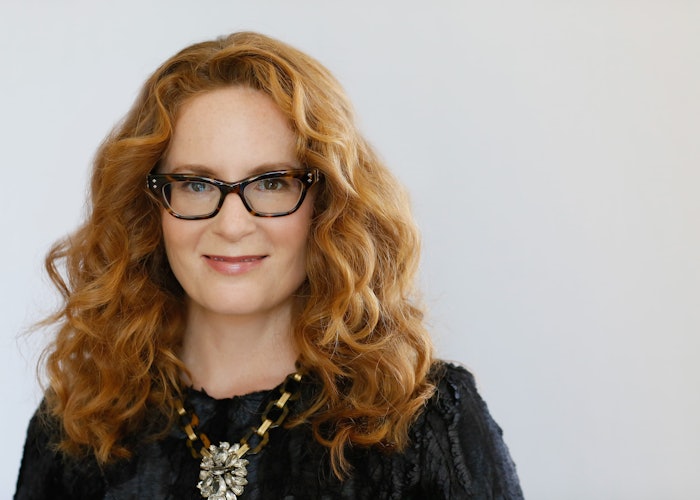
Sarah Foley is a partner at SWAT Equity Partners, an investment firm that supports emerging growth consumer brands that are disrupting their categories across various product and service sectors.
She manages all aspects of the firm's activities and has led SWAT Equity’s investments in several businesses including Supergoop, Banza, Repurpose, Dipsea, Womaness, Mad Rabbit, and more.
This firm is able to identify brands that are positioned to shake up the industry and break through the norms. The team uses its combined experience for creative vision, financial discipline, investment expertise and more.
Foley has more than 20 years of experience as a seasoned private equity professional, operator and investor across a variety of industries.
What kind of companies do you look to invest in?
[SF]: First and foremost, we look for consumer-facing products or services with real points of differentiation addressing the needs of an underrepresented customer with oversized demand.
Oftentimes, this is most easily seen with companies building products or services for the next generation [which are] younger customers whose purchase decisions are highly influenced by attributes and features that are more important to them than offerings from legacy brands that were built decades earlier.
Then, we apply our experience in finance, investing and marketing to filter those companies that have at least $1 million in annual sales, strong financial metrics we know will improve with scale, success conveying their differentiation and value proposition to early adopter customers, and a leadership team with vision, passion and resilience.
What makes a company attractive?
[SF]: Seeing early indications that a product or service gap for an underrepresented customer with oversized demand is being filled successfully. Those early signs vary.
For example, one sign may be an increasing rate of repeat customer purchase behavior online. Another may be new retailer partners pursuing the brand to offer products in their stores.
Or, average order values growing. Or, strong quarterly or annual sales growth without substantial rounds of capital required for support.
We then get excited about helping the leadership team pursue strategies to continue scaling while increasing overall efficiency with our investment capital and other support.
A couple of examples within SWAT Equity’s current portfolio include Banza, originally a better-for-you pasta brand using chickpea flour to offer consumers a higher fiber and protein alternative that has expanded its product portfolio to include frozen pizza and waffles.
Another example is Mad Rabbit, which offers uniquely formulated skin care products addressing pre-, post- and everyday care items for people with tattoos.
What is a turn-off about a company?
[SF]: Unrealistic expectations about how long it takes to scale a company and build brand equity.
We believe a typical consumer brand requires about 10 years to develop a position of authority and recognition in its chosen category.
Because we invest quite early in this journey, it is imperative that the leadership team have the vision, passion and resilience to endure.
What is most interesting to you about the wellness sector?
[SF]: It has infiltrated everything we do at SWAT Equity. It is a major filter we utilize for all types of consumer packaged goods categories, and also affects how we approach mental, physical, financial, relationship and other areas of wellness.
We believe wellness is a euphemism for living your best life. Wellness used to be buzzy, but we firmly believe better-for-you is helping drive our economy.
Each demographic generation is more ingredient label conscious, aware of wasteful packaging, weighing the price to value proposition and focused on whether a brand’s mission aligns personally.
All of these “ingredients” set the stage for SWAT Equity to discover and actively support the brands consumers can’t live without before they know they can’t live without them.
Any tips on sprucing up an investor deck?
[SF]: Keep it shorter and make sure it answers these questions:
- Why do we need this?
- How are you different?
- What early success are you seeing with adoption?
- Is the founder’s personal mission attached to the why?
There was so much “tourist” capital that crept into the consumer space in the past five years - largely driven by technology investors who viewed e-commerce as tech-enabled rather than one of many channels of distribution our brands utilize.
We like it when they have commerce up and are getting enough traction that they are ready for the next step so you can go in with the right pitch.
What makes you perk up when you hear it in an elevator pitch?
[SF]: When founders succinctly describe their brand in such a way that I can quickly visualize the market gap they aim to fill. Punctuating that with a compelling operating or financial efficiency metric wins extra points.
What trends have you been spotting?
[SF]: More doctor-developed beauty products with science-supported ingredients that address efficacy, particularly in skin and hair. We are also seeing more personal care products addressing women’s health needs for Gen Z through boomer consumers.
What do you predict will be the future of wellness?
[SF]: Wellness has permeated everything, and each successive generation will make more educated choices. I also believe there will also be more women-founded businesses in this category.
What changes should a brand make in this time of transition?
[SF]: Companies must strive for improving efficiency. Look and relook at how you are spending your capital. Constantly study your gross margin and contribution margin by product, channel and individual retailer and do not evaluate your marketing spend only by an LTV/CAC [ lifetime value/customer acquisition cost] ratio.
Instead, focus on if your first order is profitable rather than at what point your customer becomes a profitable one.
Lastly, we believe marketing spend is becoming more and more difficult to attribute to a single channel of distribution. We have been studying a brand’s marketing efficiency ratio to evaluate whether or not the team is learning and iterating on all types of marketing spend that may drive sales.










